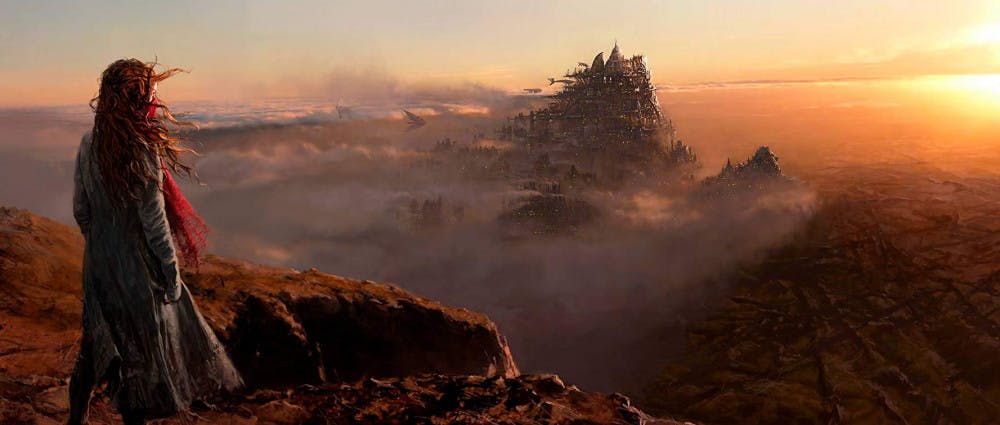by Tanner Kinney
Disclaimer: This review contains spoilers for Mortal Engines.
Harry Potter and the Sorcerer's Stone was kind of an anomaly for the time. It was a film based on a book that was able to succeed in not losing any of the magic and imagination of the original while still being a good film on its own merits. The success of its film series, however, had some truly terrible consequences. Harry Potter ushered in an era of young adult (YA) fiction getting adapted into terrible movies. Most movies aren’t as good as the books, even Harry Potter, but some movies took it to whole new levels of terrible. Eragon, Percy Jackson and the Lightning Thief, Mortal Instruments: City of Bones, and many others met the tragic adaptation fate.
Although the production of these films have slowed down after the failures of The Maze Runner and Divergent to turn their terrible source material into something semi-watchable, there have still been no shortage of YA adaptations. However, I can say something with confidence after sitting through all two hours and eight minutes of Peter Jackson’s (yes, that Peter Jackson) Mortal Engines.
YA adaptations are like the dinosaurs. Mortal Engines is the meteor.
Cut-and-paste factory produced plot
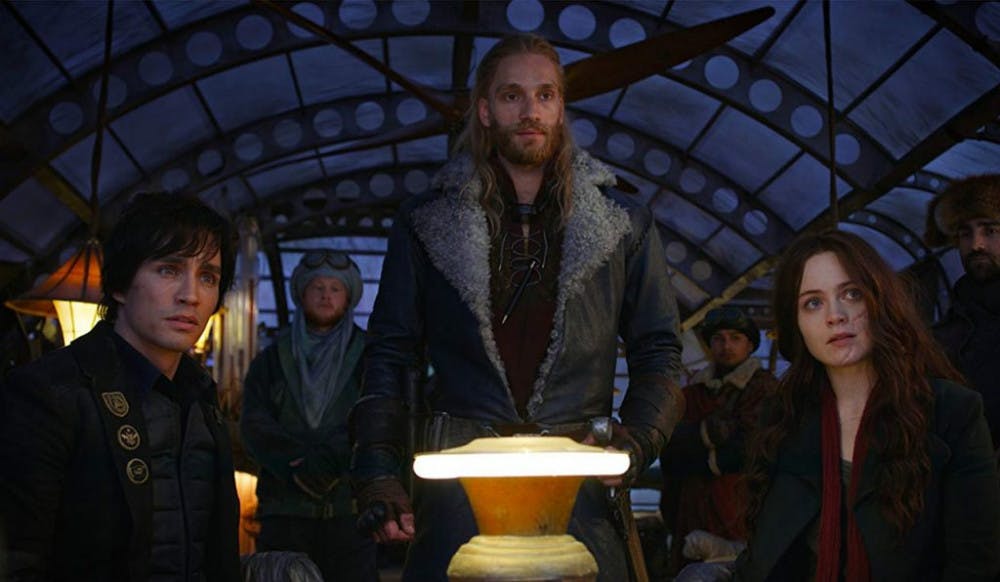
Mortal Engines is based on a YA novel released in 2001 about a post-apocalypse world where big cities are actually giant moving tanks. It’s like Mad Max, except all of the vehicles are actually settlements of people. It’s an interesting setting, one that could lead to a lot of interesting political drama and solid action set-pieces with a good script and great characters. The world around the movie is unfortunately much more interesting than the movie itself, which abandons the political drama for a more YA-friendly narrative.
The story follows Hester Shaw (played by Hera Miller), an orphan girl with a scar on her face that she covers with that red bandana she wears in all the advertisements but only for five minutes in the actual film. Her goal is to kill Thaddeus Valentine (played by Hugo Weaving, who was likely blackmailed by Peter Jackson to star in the film), an engineer building a big space laser for the giant “predator city” that is London. She almost succeeds in the first ten minutes of the film before getting stopped by a young historian named Tom, a person with the personality of actual driftwood. A chase sequence leaves Hester and Tom stranded in the wasteland, with only Twinkies and their respective tragic backstories to keep them company.
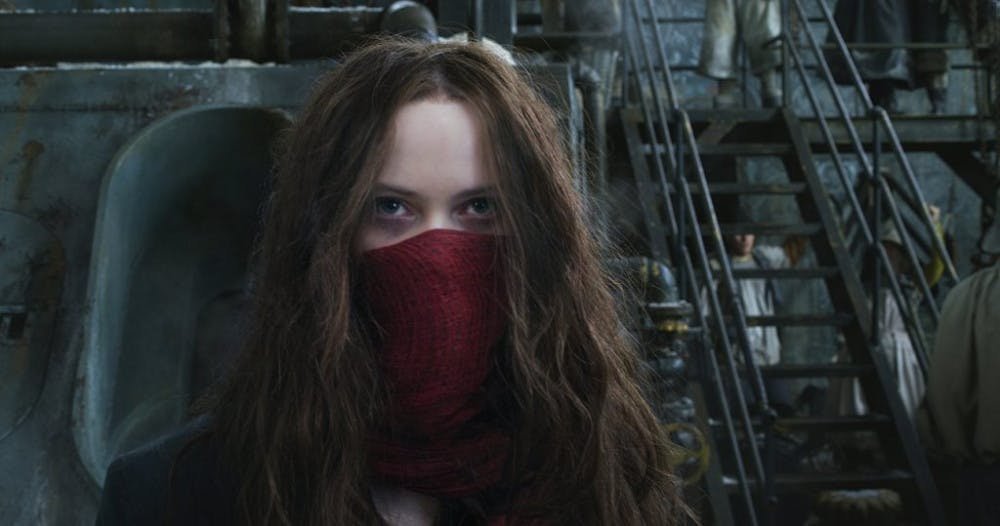
The plot is the most basic of basic plots, despite the interesting setting. A girl is trying to stop an evil man (who is also her father, which was apparently a plot twist but I just thought it was established lore from the first few minutes of the film) from creating a weapon strong enough to destroy all other cities that stand in their way. The scrappy resistance uses a few planes to take on this giant tank in the climactic final battle, which was so blatantly Star Wars that I just accepted it as a knock-off. If you’ve seen one of these terrible YA adaptations, you can guess where the movie is going and what tropes it will use on the way to its underwhelming finale.
The most disappointing part about the major story beats being so bland and predictable is that the book has a lot more twists and turns, even just from the synopsis on Wikipedia. The villains are more complex, the motivations more twisted, the protagonists are less perfect, and the set-pieces are more interesting. The whole ending sequence of the movie does not happen in the book at all from what I can tell, which just reeks of production interference. And you may say that we have no evidence of production interference, but given that Minion statues are in the history museum as “American Deities,” it wouldn’t surprise me if Universal had its greedy fingers in this plastic pie.
Cookie-cutter characters to fit in YA boxes
The characters are also as generic as the story. Hester is cold-hearted, but finds love in the vanilla ice cream equivalent of a man that she knows for all of 30 minutes real-time. The advertising tries to paint Hester as this new Katniss Everdeen, who was a badass warrior who falls in love due to circumstances and what seems like real connections. Hester doesn’t do much of anything to show she’s a badass, except scowl a lot. In the final confrontation with Valentine, this man she’s been trying to kill for literal years, she has him at gunpoint and doesn’t pull the trigger. Katniss would’ve pulled the trigger. Even Thomas from The Maze Runner would’ve pulled the trigger, even if he proceeded to whine about it for the next half-hour. Hester fails, and has to be saved by her cheese pizza of a man. What a waste of a strong protagonist.
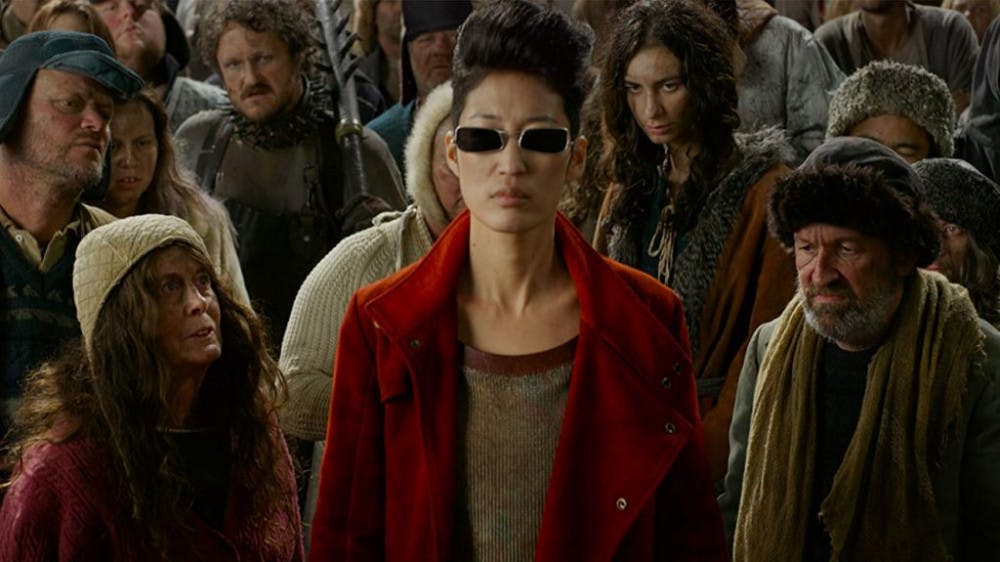
The other non-Hester characters, aside from Tom, are all tropes given life like sitcom characters. Valentine is the villain who believes he’s doing good. The bounty hunter Anna Feng is cool and all but still very generic. The Burger King Kids’ Club that is the resistance barely get any dialogue at all, so when they die at the end it has next-to-no impact. The only character who might have become interesting is Valentine’s (official) daughter, but she doesn’t get screen-time aside from the occasional cut-away where Some Guy shows her that her father is evil. And then there’s the worst character of them all: Shrike.
Shrike is what they refer to as a “stalker,” a reborn human with no emotions that serve to hunt down and kill targets with no remorse. Shrike’s goal is to hunt down and kill Hester Shaw, a name he yells out at least 20 times. But, you may ask, why is Shrike hunting down Hester when she’s not his target? Well, that’s because Shrike raised Hester when she was a child and developed an emotional connection. He wanted to turn her into a robot so she could forget her tragic backstory and live life forever as a killer robot. After attacking the resistance’s home of Not-Columbia-from-Bioshock Infinite, Shrike stops himself from killing Tom because Hester is in love with Tom and all of his plain hamburger personality traits. Shrike then falls over and has green-tinted flashbacks before dying, adding nothing to the story except another character to share a tragic backstory.
Because everyone has a tragic backstory in this world, each character will not shy away from spending a whole ten minutes waxing about their life story. Every single major character does this, and I wish I was joking when I say that. Some movies follow the “show, don’t tell” philosophy. Others follow the “tell, don’t show” philosophy. This movie straight up does show and tell for every single character, and it greatly slows down the pacing to a near crawl. This movie may be two hours long, but it felt much, much longer. If only the characters were interesting enough to warrant a tragic backstory it might not be so bad.
A pretty shell for a hollow film
The film is at least held up with one strong aspect, something that saves the film from being gutter-trash with the other YA adaptations this year, and that’s a good visual style. When the characters shut up and you can just watch these titular “mortal engines” operate and move around, it looks genuinely fantastic. The opening scene in the film, when London is chasing the small house-car Hester is on, is amazing to watch and gave me high hopes for the film. The machines look like they have weight to them, with the individual structures of the engines falling apart realistically. If it turns out Peter Jackson was only on the production for this one scene, it wouldn’t surprise me, because the rest of the movie doesn’t even come close to looking as good.
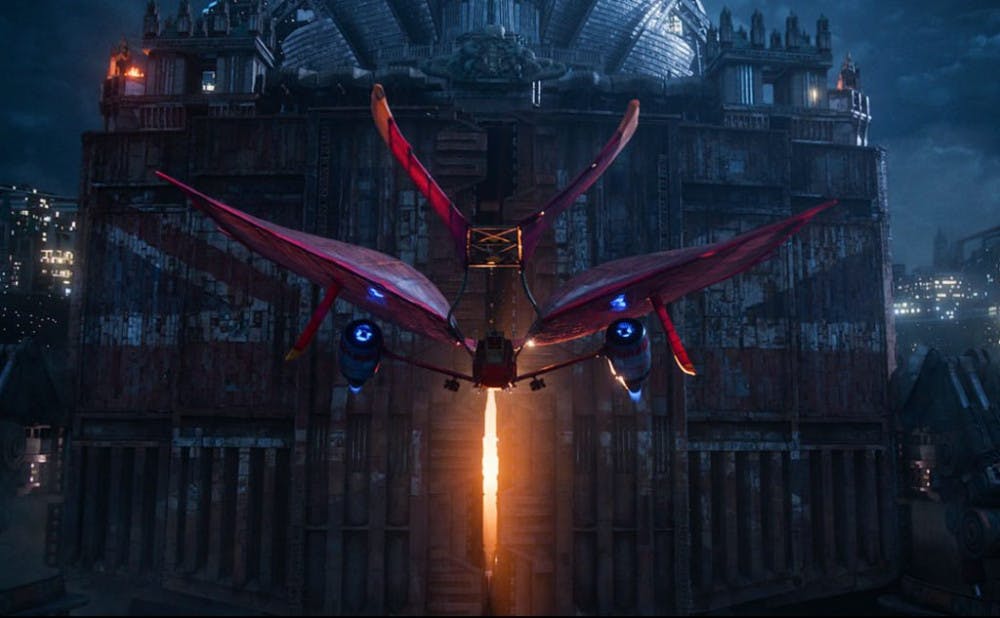
Despite that, it’s still an aesthetically pleasing movie. Steampunk has been done to death, and there are only so many ways you can put some gears on it while still being a trendy fashion of the kids today. Yet it’s still a very well-shot film with great sets, costumes, and art direction. The editing was rough in a few spots, particularly during a scene involving Hester talking about her tragic backstory, but overall it wasn’t noticeably bad. Let’s say this movie is like a used car: it looks nice on the outside, but once you start driving it, you realize that there’s actually no engine. Or wheels. Or even a steering wheel. And it has tacky fuzzy dice. Plus, there’s a strange clicking noise in the back of the car you can’t pin down but it’s mildly concerning. But hey, at least it looks nice on the outside.
Images: IMDb
Featured Image: IMDb















